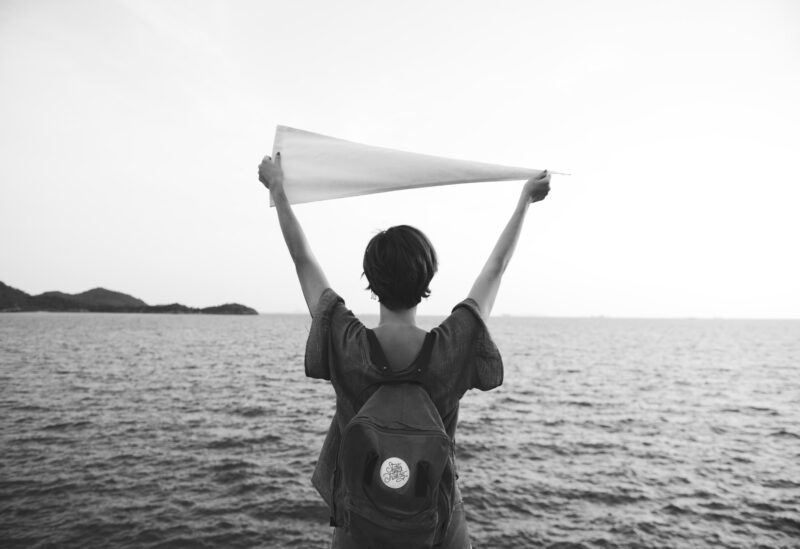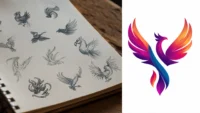In this article:
- Step Away To Find A New Paradigm
- Explore Influences Beyond Traditional Design
- Collaborate And Share Ideas
- Embrace Nonconventional Constraints
- We always come back…
Although inspiration can be found in many places, designers, regardless of experience or expertise, are no strangers to frustrating periods of decreased inspiration and feelings of inability to overcome a creative rut. Fear of failure, perfectionism, negative self-talk, overwhelm, burnout, lack of new experiences, and time constraints are all among the plethora of psychological factors that could potentially contribute to feeling stuck in creativity, reinforcing the idea that the creative mind loves new things and thrives on complexity.
Staring at a canvas with nothing but frustration and desperate attempts. Not so pleasant, right? Not at all. In fact, it is really common to lose sense of reality or feel unworthy when you feel blocked or empty inside. Many artists suffer periods where they struggle with inspiration, motivation, and creativity.
Let’s explore strategies that top designers use to resurrect their creative spark. And no, we are not going to highlight Beethoven’s addiction to cheap Austrian wine as a viable alternative to gain inspiration.
Step Away To Find A New Paradigm
If you find yourself ruminating over the same canvas for hours upon hours, one of the most effective tips would be to step away from the project altogether. This mentally draining state where the brain repetitively dwells on negative thoughts or worries is often described as rumination or cognitive fatigue, and it can become significantly exhausting if not addressed immediately.
Most popular designers recommend engaging in versatile activities to refresh the mind. Relevant examples include:
- Travel is one of the most powerful ways to break through a creative block, encouraging deep self-reflection and new ideas. Visiting places rich in music, art, language, and tradition can disrupt mental ruts, challenge worldview, and reawaken your senses. Interview strangers, dance, and live freely!
- Physical movement can be a helpful strategy for overcoming creative blocks. Research suggests that a person’s creative output increases by an average of 60% when walking.
- Reflective practices such as journaling freely, writing a letter to your future or past self, and creating a mind map encourage new perspectives and foster a more positive and proactive approach to creativity.
Explore Influences Beyond Traditional Design
Top designers have long acknowledged that inspiration can be indeed found in the most unlikely of places, so they encourage engaging with diverse perspectives. Let’s say you’re a fashion designer. Although apparently the best idea, sticking solely to fashion-related content can substantially limit creativity. You should look outward to other disciplines, niches, and life experiences. For instance, reading, whether fictional or nonfictional, can stimulate your imagination, daring you to imagine how characters move, what they wear, and how their clothes reflect their emotional states, class, and secrets. A line dialogue might suggest a frayed cuff or a perfectly pressed collar. Meanwhile, a rainy scene might bring to mind damp velvet, clinging silk, or patent boots. When others see words, you see wool, lace, tulle, leather, corsetry, contrast stitching, or power shoulders. Basically, you’re translating the story into design.
The same principle applies to every art form. Whether you explore original art prints and architecture or watch films and theatre performances, this cross-pollination of ideas is a viable tactic for unchaining yourself from mental roadblocks.

Get 300+ Fonts for FREE
Enter your email to download our 100% free "Font Lover's Bundle". For commercial & personal use. No royalties. No fees. No attribution. 100% free to use anywhere.
Collaborate And Share Ideas
Top designers always turn to pears for inspiration and fresh perspectives, reinforcing the power of collaboration in overcoming creative blocks. Furthermore, seeking constructive criticism is particularly valuable for identifying weaknesses and generating new ideas. When you step outside of your perspective, you have the privilege to see your work with fresh eyes, highlighting areas where it might be lacking, such as plot holes and cliches. Although not sufficiently talked about, it is challenging to separate your work from self-worth. Societal and cultural pressures far too equate achievements with personal value, but you should not fall into the trap. Try to view criticism as an opportunity for growth.
Remember, even a brief conversation can open doors to unexpected solutions.
Embrace Nonconventional Constraints
Although it undoubtedly sounds counterintuitive, embracing constraints can actually enhance creativity. There is a significant number of designers who thrive when working within strict boundaries, as the unknown is, surprisingly or not, a triggering factor. Here’s how to apply this principle:
- Emotional limitations: Try to express just a single emotion in the work, one that is everything but not comfortable. Potential ideas include shame, apathy, and envy. This method forces deep internal exploration, creating unexpected results.
- Subtraction method: Take one of your previous works and remove something essential. Rebuilding around the absence trains you to adapt and transform rather than repeat.
- One viewer rule: Create something for only one person to see, excluding audiences and the market. This method refocuses your intention, stripping away performance anxiety.
- Broken tool challenge: Work with a “broken” version of your usual process, such as writing without adjectives, composing with only three notes, and painting with your non-dominant hand.
- 10-minute blitz: Give yourself only 10 minutes to come up with a whole concept to force your intuition and prevent overthinking. As an extra layer, you can add a second timer later, where you must drastically change your original idea.
We always come back…
We are creatures of return, drawn back to old feelings and familiar art like tides to the moon. In worn melodies, weathered pages, and long-set brushstrokes, we find echoes of ourselves that never entirely left. These fragments, once sparked in another time, become the embers we cradle in our hands today, searching for warmth, inspiration, and a way forward. There’s something sacred in the past’s ability to speak to our present, reminding us that beauty, ache, and wonder are never truly outgrown, only waiting to be remembered. And so we return, not to relive, but to reignite.




